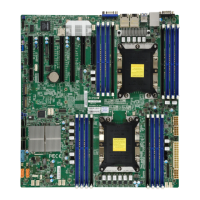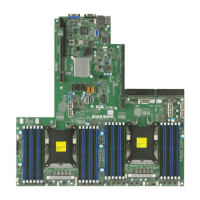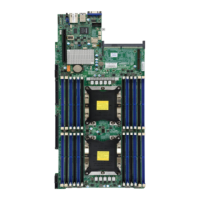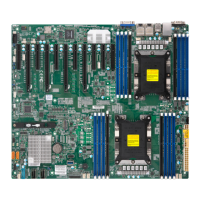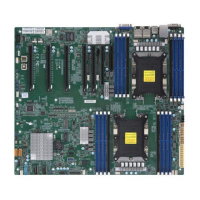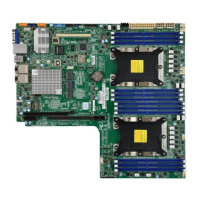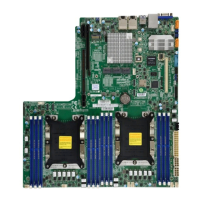Do you have a question about the Supermicro X11DPH-i and is the answer not in the manual?
Provides information for the installation and use of the motherboard.
Details the specifications, features, and layout of the X11DPH motherboard.
Outlines the structure and content of the user manual's chapters.
Provides essential links for drivers, utilities, and documentation.
Details CPU, memory, chipset, expansion slots, I/O, and management features.
Shows a detailed diagram of the motherboard's components and connectors.
Provides tables for jumper, connector, and LED information.
Safety measures and precautions for handling static-sensitive components.
Guides for physically mounting the motherboard into the chassis.
Detailed instructions for installing the CPU and heatsink module.
Steps and guidelines for installing DIMM modules and DCPMMs.
Explains rear I/O ports, USB, Ethernet, and front panel connections.
Details jumper functions for CMOS clear, manufacturing mode, and watch dog.
Addresses issues like no power, no video, boot failure, and memory errors.
Provides guidance on contacting support and answers to common questions.
Instructions for battery removal, installation, disposal, and product service.
How to enter and navigate the UEFI BIOS setup utility.
Details system date/time, version information, and memory status.
Covers boot, CPU, memory, power, chipset, and security settings.
Details SATA, NVMe, VROC RAID, Secure Boot, and iSCSI settings.
Options for administrator/user passwords, secure boot, and TPM.
Configures boot mode, priorities, and options like legacy support.
Information on BIOS beep codes for error reporting.
Guides for installing system drivers and utilities, including SuperDoctor 5.
Procedures for recovering the UEFI BIOS image using USB devices.
Steps for configuring Intel VROC RAID settings and volumes.
Instructions for enabling and managing Secure Boot features and keys.
Details on configuring iSCSI initiator and target settings.
Configuration options for onboard Intel LAN devices via BIOS.
| COM ports quantity | 2 |
|---|---|
| USB 3.2 Gen 1 (3.1 Gen 1) Type-A ports quantity | 5 |
| Number of DIMM slots | 16 |
| Maximum LRDIMM memory | 64 GB |
| PCI Express x8 (Gen 3.x) slots | 4 |
| Supported DIMM module capacities | 64GB, 128MB |
| ECC | Yes |
| Memory voltage | 1.2 V |
| Supported memory types | DDR4-SDRAM |
| Maximum internal memory | 2048 GB |
| Supported memory clock speeds | 2133, 2400, 2666 MHz |
| RAID levels | 0, 1, 5, 10 |
| Supported storage drive interfaces | SATA III |
| Bundled software | Intel® Node Manager, IPMI2.0, KVM w/ dedicated LAN, SPM, SSM, SUM, SuperDoctor® 5, Watchdog |
| Storage temperature (T-T) | -40 - 70 °C |
| Operating temperature (T-T) | 10 - 35 °C |
| Storage relative humidity (H-H) | 5 - 95 % |
| Operating relative humidity (H-H) | 8 - 90 % |
| Wi-Fi | No |
| Ethernet interface type | Gigabit Ethernet |
| Component for | Server |
| Motherboard chipset | Intel® C621 |
| Motherboard form factor | Extended ATX |
| System bus rate | 10.4 GT/s |
| Processor socket | LGA 3647 (Socket P) |
| Processor manufacturer | Intel |
| Processor thermal power (max) | 205 W |
| Number of SATA III connectors | 10 |
| PCI Express x16 (Gen 3.x) slots | 3 |
| BIOS type | UEFI AMI |
| Harmonized System (HS) code | 84733020 |
| Depth | 330.2 mm |
|---|---|
| Width | 304.8 mm |

